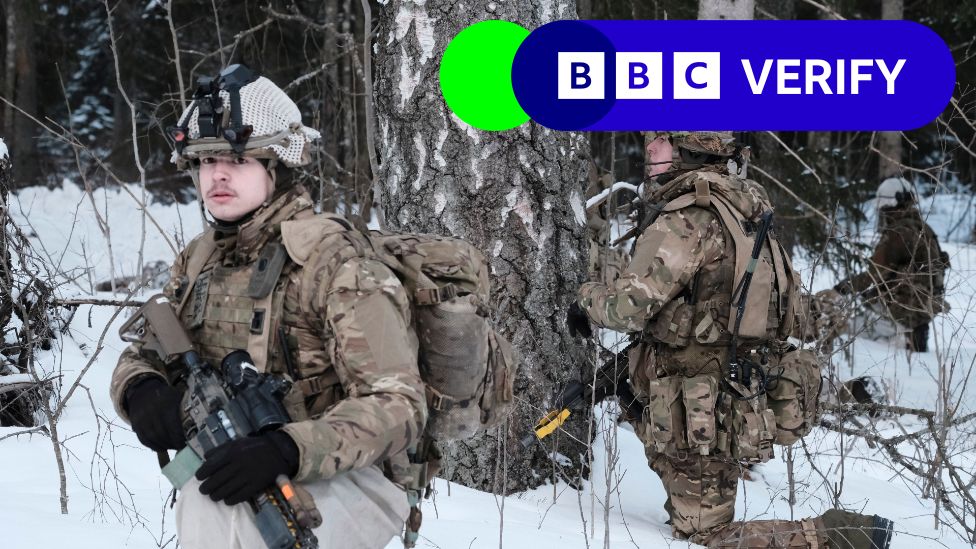How much do Nato members spend on defence?
- Published

There has been criticism of former president Donald Trump for saying he would "encourage" Russia to attack Nato-members who did not spend enough on defence.
President Joe Biden said that was "dumb", "shameful" and "un-American".
Nato chief Jens Stoltenberg said the speech: "undermines all of our security".
The members of the military alliance have pledged to spend at least 2% of the value of their economies - measured by GDP - on defence per year by 2024.
Donald Trump has regularly criticised members in Europe for not spending enough to support the alliance, relying on the US to shoulder the burden.
Which countries spend most on defence?
Nato estimates for 2023 suggest that Poland was the top spender, allocating 3.9% of GDP (the total value of goods produced and services), which was more than twice the amount it had spent in 2022.
The US was in second place, spending 3.5%, which is about the same level as it has been spending for the last decade.
In total, 11 of the 31 Nato members spent more than 2%, with the average for Nato members in Europe and Canada estimated at 1.74%.
The US is a global superpower, with military commitments around the world, not just to Nato. It had GDP equal to all the rest of the members of Nato in 2023, and contributes more than two thirds of Nato's budget.
Defence spending by European Nato members and Canada has increased over the last 10 years.
Which countries are increasing their defence budgets?
The current target for European Nato members of 2% of GDP on defence by 2024 was agreed in 2014.
In that year only three countries (US, UK and Greece) were spending more than 2% on defence.
Germany indicated in 2019 that it wouldn't reach the 2% target until 2031.
Nato members also pledged that by 2024 at least 20% of their defence expenditure should go on acquiring and developing equipment.
In 2023, all Nato members achieved that for the first time since the pledge was made.
What about the cost of running Nato?
Nato's annual budget and programmes come to about €3.3bn (£2.8bn; $3.5bn) overall, and there's an agreed cost sharing formula to pay for the running of things such as:
- civilian staff and administrative costs of Nato headquarters
- joint operations, strategic commands, radar and early warning systems, training and liaison
- defence communications systems, airfields, harbours and fuel supplies
The cost sharing is based on national income. These are the contributions of the top eight donors.
For the period from 2021-2024, the biggest two contributors to this will be the US and Germany, each paying just over 16%.
The UK is to pay just over 11% and France about 10.5%.
The US used to pay more than 22% of these running costs.
But a new payment formula was agreed in 2019 to address complaints by the Trump administration about the burden to the US of supporting the alliance.
What else does the US do for Nato?
The US has about 85,000 troops based throughout Europe. Some US personnel based in Europe support non-Nato operations and US military numbers fluctuate as forces are rotated in and out of Europe.
Germany currently hosts by far the largest number of US forces in Europe, followed by Italy and the UK.
However, the biggest single overseas deployment of US personnel is not in a Nato member state at all. It is in Japan, where the US maintains more than 50,000 troops.

US forces also have a significant presence in the Middle East and the Gulf, although exact figures are not always disclosed and some deployments are only temporary.